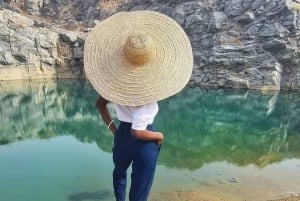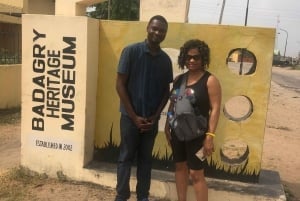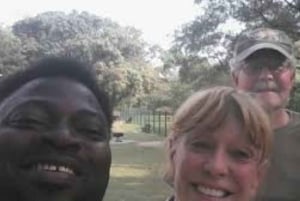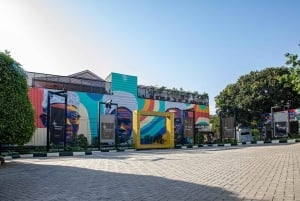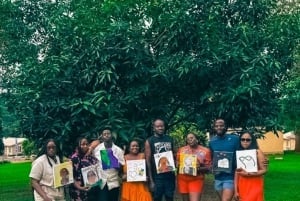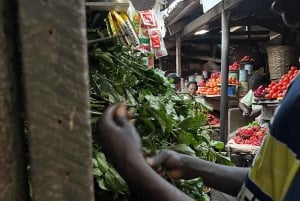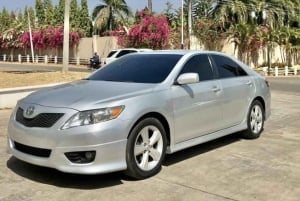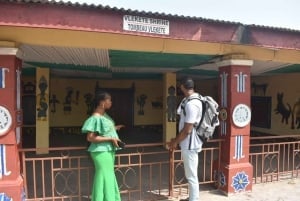North West Region
Your Local Guide to the North West Region of Nigeria

The north-west region of Nigeria offers a wide range of Islamic beauty and culture, from the Seat of Caliphates in Sokoto to the Land of Equity to the Free Trade Zone in Jigawa. It was formed from parts of the old Northern Region. This area of the country covers six states; Jigawa, Kaduna, Katsina, Kebbi, Sokoto and Zamfara. It majorly consists of Hausas and Fulanis and the religion in the region is Islam. The weather is usually dry and the temperature drops at night.
Jigawa - The New World

Jigawa State which is largely an agricultural state was carved out of the old Kano State on 27 August, 1991 during the military regime of General Ibrahim Babangida, with its headquarters in Dutse. Jigawa is on the border to Zinder Region, a republic of Niger. It has 27 Local Government Areas. Covering a total of 322,410sqkm land area, Jigawa is bordered also by Kano and Katsina to the west, Bauchi State to the east and Yobe to the north-west. Various sizes of sand dunes spanning several kilometres are found in some parts of the state. The area has vast stretches of fertile and arable land to which most tropical crops could adapt.
With a projected population of 4,348,649 million, Jigawa is populated mainly by Hausa-Fulani but there are also Manga (a Kanuri dialect) and Badawa. The pattern of human settlement here is nucleated, with clearly defined population centres.
Some important cities and towns include Dutse, Hadejia, Gumel, Ringim, Kazaure, and Birnin Kudu.
Points of interest and things to do in Jigawa State include:
Baturiya Bird Sanctuary (This is located in Kiri Kasmma LGA and provides a natural habitat for over 378 species of migratory birds from areas as far as Europe and Australia. This site has been visited by Prince Philip and Prince Charles who are members of the Wildlife Conservation Foundation). Wawan Rafi Lake (Wawan Rafi is situated in Kazaure and it has a scenic environment. Golf course and other recreational activities are also taking place there). Range of Quasite Rocks (This is found in Amaryawa in Roni Local Government Area could provide rock climbing activities for tourists). Birnin Kudu Rock Painting (Birnin Kudu lies in the southern part of Jigawa State and is known for the presence of large number of rocks and their fascinating primordial paintings which provide expressive information on the styles of the early occupants of the area). Hadejia Wetlands/Nguru Wetlands & Birds Sanctuary (This sanctuary has exotic and rare species of birds). Emirs’ Palace (The Emir’s palaces in Kazaura, Ringim, Gumel, Dutse and Hadejia have attractive designs which are a combination of native and modern architecture). Gwaram Forest Reserve (This forest reserve is one of those created by the government to preserve the forest and wildlife).
Kaduna State - Centre of Education

Kaduna State has its origin in the old Northern Region of Nigeria. Its capital is Kaduna City and the ancient city of Zaria is situated in Kaduna. You will find different dialects of the Hausa language here; Adara, Gbangyj, Gong, Atyap, Ninkyob and Kura are all spoken. The state has over seven national educational institutes, which is why it is known as the 'centre of education'. The old Kaduna State was made up of Zaria and Katsina provinces until 1987 when Katsina Province was carved out to form the present Katsina State. So bountifully blessed by nature, it has a rich cultural heritage and very generous, hospitable and peace loving people. Kaduna state is the successor to the old Northern Region of Nigeria, which had its capital at Kaduna. In 1967 this was split up into six states, one of which was the North-Central State, whose name was changed to Kaduna State in 1976.
Kaduna State is a multi-cultural and multi-ethnic state. The main ethnic groups include Fulani, Hausa, Bajju, Atyap, Jaba, Adara, Gbagyi, Kurama, Ninzo, Ham, Koro, Kagoro, Gwong, Numana, Gure, Kaninkon, Moro’a, Kagoma, Kadara etc. Kaduna State occupies part of the central position of the Northern part of Nigeria and shares common borders with Zamfara, Katsina, Niger, Kano, Bauchi and Plateau States. To the South-West, the State shares a border with the Federal Capital Territory, Abuja. The State occupies an area of approximately 48,473.2 square kilometers and has a population of more than 6 million (2006 census).
The main cities and towns include Kaduna, Zaria, Kagoro, Kafanchan, Kachia and Zonkwa
Points of interest and things to do in Kaduna include:
Emir’s Palace, Zaria, City Wall, Zaria, Ahmadu Bello University (ABU), Zaria, Barewa College, Zaria, Amalgamation House, The Nok (which is one of Africa’s most famous archaeological sites), Fifth Chukker Resorts, Lord Lugard Residence, Matsirga Waterfalls,Trappco Ranch & Resort, Kajuru Castle, River Kaduna, Lord Lugard Foot Bridge, Lord Lugard Hall, St. Bartholomew’s Church (The church is of traditional architectural design built of treated mud, cow dung and grass), National Museum, Kamuku National Park
Kaduna has a rich cultural heritage evidenced in her different religious practices, festivals, music and dances, cuisines and culinary among others. Some of these festivals include:
- Durbar Festival (a royal parade of thousands of men on horses adorned with garment and regalia)
- Afan Festival (usually takes place on the first day of the New Year)
- Tuk-Ham (a two-day festival that usually comes up during Easter holidays)
- Kalankuwa Cultural Festival (a kind of thanksgiving festival celebrated after the harvest season).
- Kaduna State Festival of Arts & Culture (usually takes place between November and December)
Katsina State - Home of Hospitality

Katsina was created out of Kaduna State in 1987 and is divided into 34 Local Government Areas. The population consists majorly of Hausa-Fulanis, and the state is mostly Muslim although the Church of Nigeria has a Diocese of Katsina. The Redeemed Christian Church of God and the Roman Catholic Church are also in the state. A large number of icons from Nigerian and African history originated from Katsina.
The state is made up of two Emirates (Katsina and Daura emirates) which feature prominently in the establishment of the seven Hausa kingdoms. The lineage between Daurama and Bayajida produced the founders of Daura, Katsina, Zaria, Kano, Rano Gobir and Biram. The State was founded by Kumayo and before the Fulani conquest had been a significant seat of learning and a commercial centre of the trans-Saharan trade. The state covers a total land mass of 24,192km, and has boundaries with Kano and Jigawa States in the east, Zamfara State in the west, Kaduna state in the south, and Niger Republic in the north. Katsina State forms part of the expansive plains known as the High Plains of Hausa-land.
The important cities and towns here include Katsina, Funtua, Daura, Bakori, Dutsi, Jibia, Bakori, and Zango.
Points of interest and things to do in Katsina include:
Katsina City Gate (built about 900 years ago during the reign of King Murabus)., Emir’s Palace, Daura (with traditional architectural designs dated as far back as the early 19th Century)., Gobarau Minaret (built over 300 years ago with baked clay and mud), Jibia Holiday Resort, Emir of Katsina Palace, Kusugu Well & Legendary Bayajida Sword, Katsina city Walls “Ganuwar Amina”, Old Katsina Teacher’s College (which produced prominent Nigerians like the late Prime Minister, Sir. Abubakar Tafawa Balewa and Alhaji Sir, Ahmadu Bello and many others), Mairuwa & Ajiwa Holiday Resorts, Dan marina Tomb, Durbi – Takusheyi Site, Chamah Park, Jibia
Kebbi - Land of Equity

Kebbi was created from Sokoto in 1991, and is known as the 'land of equity'. The state, bordered by Sokoto, Niger and Benin, is said to have originated from Assryrian refugees fleeing Babylon. Kebbi is about 36,800km2, with fairly rocky terrain in the southern parts and swathes of sandy landscapes in the north. There is plenty of agricultural production in the state and Islam is the main religion here.
Kebbi State was created out of the old Sokoto State in 1991 with its headquarters is Birnin Kebbi. The state is grouped into four emirate councils (Gwandu, Argungu, Yauri and Zuru) and 21 Local Government.
Kebbi State is a mainly agricultural state carved out of the old Sokoto State on 27 August 1991, during the military regime of General Ibrahim Babangida.
Kebbi State is occupied by over 3 million persons, with diverse ethnic groups. The dominant groups are Hausas, Fulanis, Kabawa, Dakarkaris, Kambaris, Gungawa, Dandawa, Zabarmawa, Dukawa, Fakkawa and Bangawa. Nonetheless, there are a minority of Christians and traditional worshippers particularly to the south of the state. These ethnic diversities and religious differences notwithstanding, the people of Kebbi are peace-loving.
Some important cities and towns include Birnin Kebbi, Argungu, Yauri, Zuru, Jega, Kamba, Koko, and Bagudo.
Points of interest and things to do in Kebbi include:
Argungu International Fishing Festival, Uhola Festival, Karishi Traditional Settlement, Tomb of Abdullahi Fodio (the brother of Sheikh Usman Danfodio), Girmace Shrine, Zulu, Alwasa Battlefield at Argungu, Yelwa Museum of Archaeology, Kanta Museum, Argungu, Zuru Museum, Zuru, Moving Rock at Akinkiya in Ngaski
Sokoto - Seat of the Caliphate

Sokoto State (capital: Sokoto City), is a state in the extreme north-west of Nigeria. The name Sokoto, which is the anglicised version of the native name Sakkwato is of Arabic origin, signifying ‘suk’, meaning ‘market’. It was created by a military Head of State, and is known as the 'Seat of The Caliphate'. Being the seat of the Sokoto Caliphate, the city is predominantly Muslim and the Sultan who heads the caliphate is by record the spiritual leader of all Nigerian Muslims. The state has a total land area of about 32,000sqkm and is populated to the tune of 3,696,999 million people (based on the 2006 census) and it is largely dominated by Hausa and Fulani people.
The minority groups include the Zabarmawa and Tuareg with Hausa as a common language. As expected, the city is totally Muslim, and it is an important area of Islamic learning in Nigeria. The state is located in the north-western part of the country and has common borders with Niger Republic to the North, Kebbi State to the south-west and Zamfara State to the east.
Few crops grow in Sokoto, due to the area being generally dry and not very arable.
The major cities and towns in the Sokoto state are Yabo, Guddu, Ilela, Binji, Gwada Bawa, Bogingo, Tambulwal, and Wurno.
Points of interest and things to do in Sokoto include:
Waziri Junaidu History & Culture Museum, Surame (which is the ruins of the old headquarters of Kebbi Kingdom), Akalawa (which is the ruins of the capital city of Gobir Kingdom), Sultan of Sokoto Palace, Tomb of Usman Dan Fodio, Sokoto Museum (a national museum of artifacts and monuments of the old Sokoto Caliphate), Heritage Museum (which displays the rich cultural artifacts of the Sokoto kingdom)
Gilbadi Rocks (which contains ancient fossil remains), Goronyo Dam, Shehu Kangiwa Square (formerly known as Ginginya and was the site of the battle between British troops and the forces of Sokoto led by Sultan Attahiru in 1903).
Zamafara – Farming is our Pride

Zamfara State (capital: Gusau) was one of the ancient Hausa city-state. It was created out from the former Sokoto State in 1966 during the military administration of General Sani Abacha It covers up to the bend of River Rima to the Northwest and River Ka in the Southwest.
Zamfara kingdom came into existence in the 11th century and thrived up to the 16th century as a city-state. Zamfara is largely dominated by the Hausa and Fulani. The other ethnic groups in the state includes the Kanuri, Nupe, Tiv, Kamuku, Bussawa, Zabarma, Gwari, Dakawa. The occupation of the people of the state is predominantly farming. They produce both food crops and cash crops, hence its slogan “Farming is our Pride”. The kingdom became a part of the Sokoto Caliphate after the 1804 Jihad by Usman dan Fodio. Zamfara state is found in the northwestern part of Nigeria and has an area of 38418 square kilometres. In her north lies Niger Republic, in the south Kaduna State, to the east it is bordered by Katsina State and to the west by Sokoto and Niger.
Important towns include Bade, Fune, Bursari, Fika, etc.
Points of interest and things to do in Zamfara include:
Kwartarkwashi Rock / Water Spring, Kanoma Hills, Kiyawa city walls, Kuyambana Game Reserve, Namoda’s Tomb, Kaura Namoda, Sambo Dan Ashafa’s Tomb, Wonaka, Emir of Anika’s Palace, Ruins of Yargoje’s Court, Zamfara State Museum, Bakolori Dam



